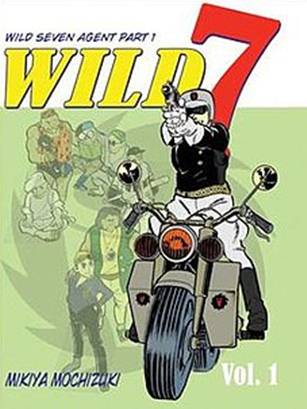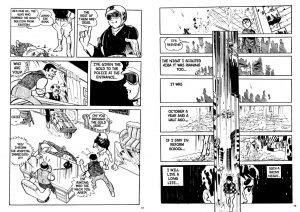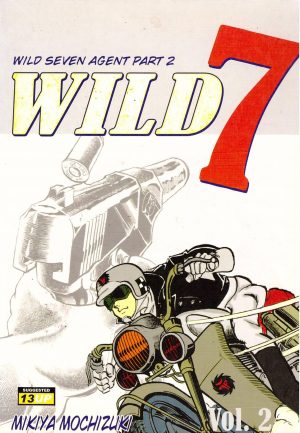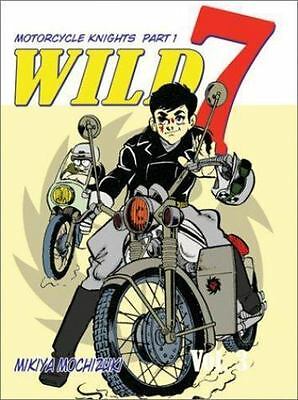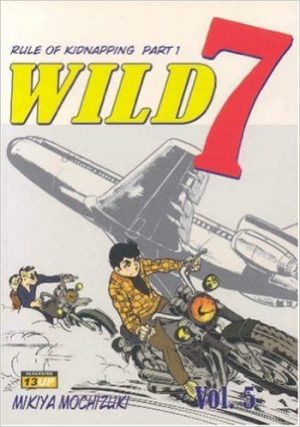Review by Frank Plowright
In its day Wild 7 was a much loved manga series in Japan, extrapolating a near future where criminal and terrorist activities had escalated to such a degree that the police had no other choice but to fight fire with fire. They put together a motorcycle squad of ex-criminals. Backfire, Chasu, Don, Hiba, Hippy Tom, Otto and Sekai are the Wild 7, abrasive and violent, with little concern for procedure or protocol, but as long as they get results their bosses look the other way. However, if need be, there is a way of keeping them under control, a disturbingly inventive way.
Instead of taking the grim and gritty road Mikiya Mochizuki opts for the light touch, playing up the comic eccentricities of the Wild 7, with the handsome Hiba taking the lead role. He’s the member most likely to walk down the street without attracting undue attention, but put him on a motorbike and he’s a demon. It’s Hiba who occupies much of this volume, his past revealed and his current mission played out.
The sample art shows the sophistication of Mochizuki’s storytelling technique, with much of the dip into Hiba’s past having the rain coming down in torrents, inevitably bringing Will Eisner to mind. There’s a real leap from the opening chapter, which is drawn professionally, but without any real spark to it, little figures in crowded panels. However, from then it’s as if Mochizuki has opened the throttle, maximising the thrills via unusual panel formations and fantastic stunts. He’s also great at creating distinctive people, excelling with sleazy crooks. The strips were created in the late 1960s and early 1970s, so some elements now show their age, but be in no doubt that Mochizuki is one hell of an artist.
As a storyteller he fluctuates. There’s an awareness of the necessity to emphasise action, but for a series allegedly focusing on the group given a lively portrait before the title page, we see very little of anyone but Hiba. He’s the person who hands over the stolen goods from the opening action, his past is revealed, although not everything, and he’s the guy on a present day mission. Accept that and Seven Wild Men still fulfils most of what it sets out to do, and the final chapter opens with a phenomenally tense situation, yet one that’s simple and wonderfully set up. There’s unfinished business that continues in Seven Wild Men Part 2. Oh, best to ignore the cover subtitles of the English language versions. They’re all over the place and don’t connect with the more logical internal titles.
